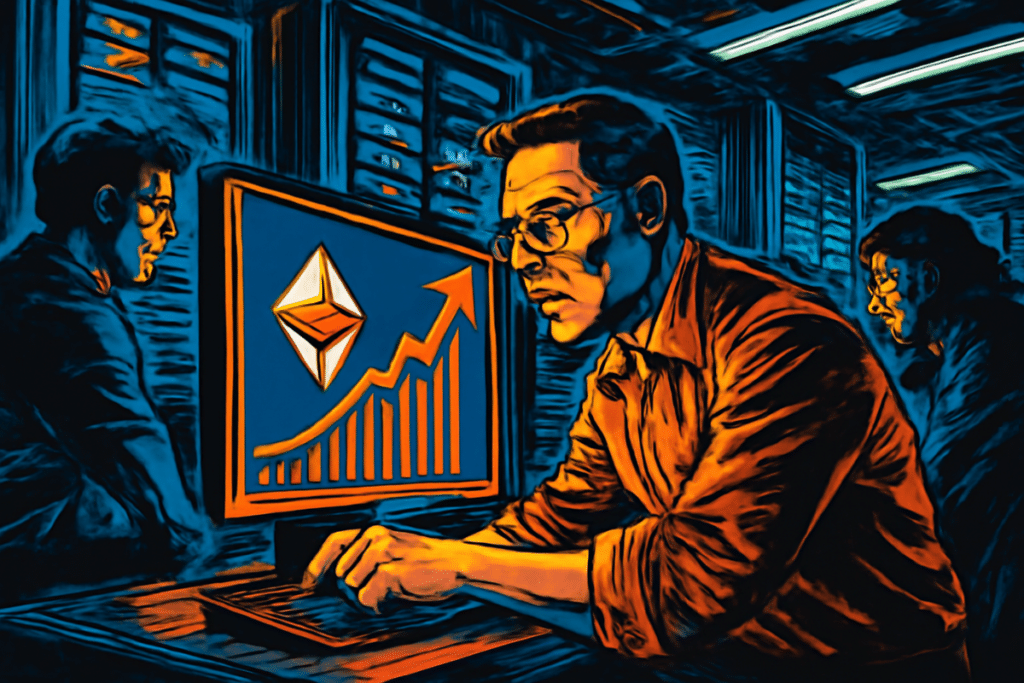Validators Are Testing A Crucial Update To Increase The Speed Of Ethereum
For years, Ethereum has been facing network congestion issues. While updates over the past few years have enabled the creation of an entire ecosystem of scalable layer 2 solutions, this has come at the expense of layer 1. To address the increasingly persistent criticism, the Ethereum Foundation and Vitalik Buterin have now decided to focus all their efforts on the performance of the latter. The new OptimumP2P feature, currently in testnet, will undoubtedly be an asset to boost network performance and communication between nodes.

In Brief
- Ethereum must renew itself to escape being overshadowed by layer 2s.
- OptimumP2P: the innovation set to save Ethereum from congestion.
Ethereum Must Renew Itself to Escape Being Overshadowed by Layer 2s
Since 2021, the Ethereum network has regularly experienced congestion issues, resulting in high transaction fees or slowdowns. These scalability issues have been a boon for Ethereum killers like Avalanche and Solana, which have offered much more scalable blockchains and thus benefited from the previous bull run.
Unfortunately for them, Vitalik Buterin very early on planned solutions in Ethereum’s roadmap, one of which involves implementing layer 2 solutions. Gradually, Arbitrum, Optimism, and Base have established themselves in web3 as highly scalable solutions to compensate for layer 1’s weaknesses.
Ethereum’s new architecture, focused on modularity, has improved the performance of layer 2s through enhancements in the data availability layer with the implementation of blobs.
However, the success of layer 2s has led to neglect of layer 1, which has become far less usable for users accustomed to fast transactions. Moreover, layer 2s have captured the majority of the network’s revenue.
Uncertainties about ETH’s price evolution have sparked many criticisms directed at Vitalik Buterin and the Ethereum Foundation. As a result, Vitalik has decided to refocus Ethereum’s roadmap on improving layer 1 performance. Among the problems to be solved, current work concentrates on the slowness of information propagation between nodes.
OptimumP2P: The Innovation That Should Improve Communication Between Nodes
Often overlooked in blockchain improvement efforts, communication between nodes is frequently a source of congestion. Currently, Ethereum nodes communicate with each other via Gossipsub, a peer-to-peer communication protocol. Unfortunately, this protocol creates redundancy because nodes propagate their information in all directions, causing a node to regularly receive the same information multiple times.
The network layer largely relies on traditional “gossip” approaches, which use a decentralized method to propagate messages between nodes.
Muriel Médard, Co-founder and CEO of Optimum
Optimum and MIT have thus developed a new communication protocol, OptimumP2P, to address this flaw. The idea behind this protocol is to send information in packets so nodes can reconstruct it once they have received enough packets.
Currently, this protocol is being tested by several major Ethereum validators who control 14% of the network’s staking. This test shows that even with numerous messages broadcast on the network, performance increases by a factor of ten.
After improving the different layers of Ethereum, the new OptimumP2P feature aims to update the network layer and communication between nodes. Currently in testnet, OptimumP2P could give a new lease on life to Ethereum’s layer 1 in the coming months.
Maximize your Cointribune experience with our "Read to Earn" program! For every article you read, earn points and access exclusive rewards. Sign up now and start earning benefits.
Passionné par l’histoire du Web3, je m’efforce de rendre cette nouvelle ère numérique plus compréhensible grâce à mes articles et à ma thèse de doctorat en cours sur le sujet.
The views, thoughts, and opinions expressed in this article belong solely to the author, and should not be taken as investment advice. Do your own research before taking any investment decisions.